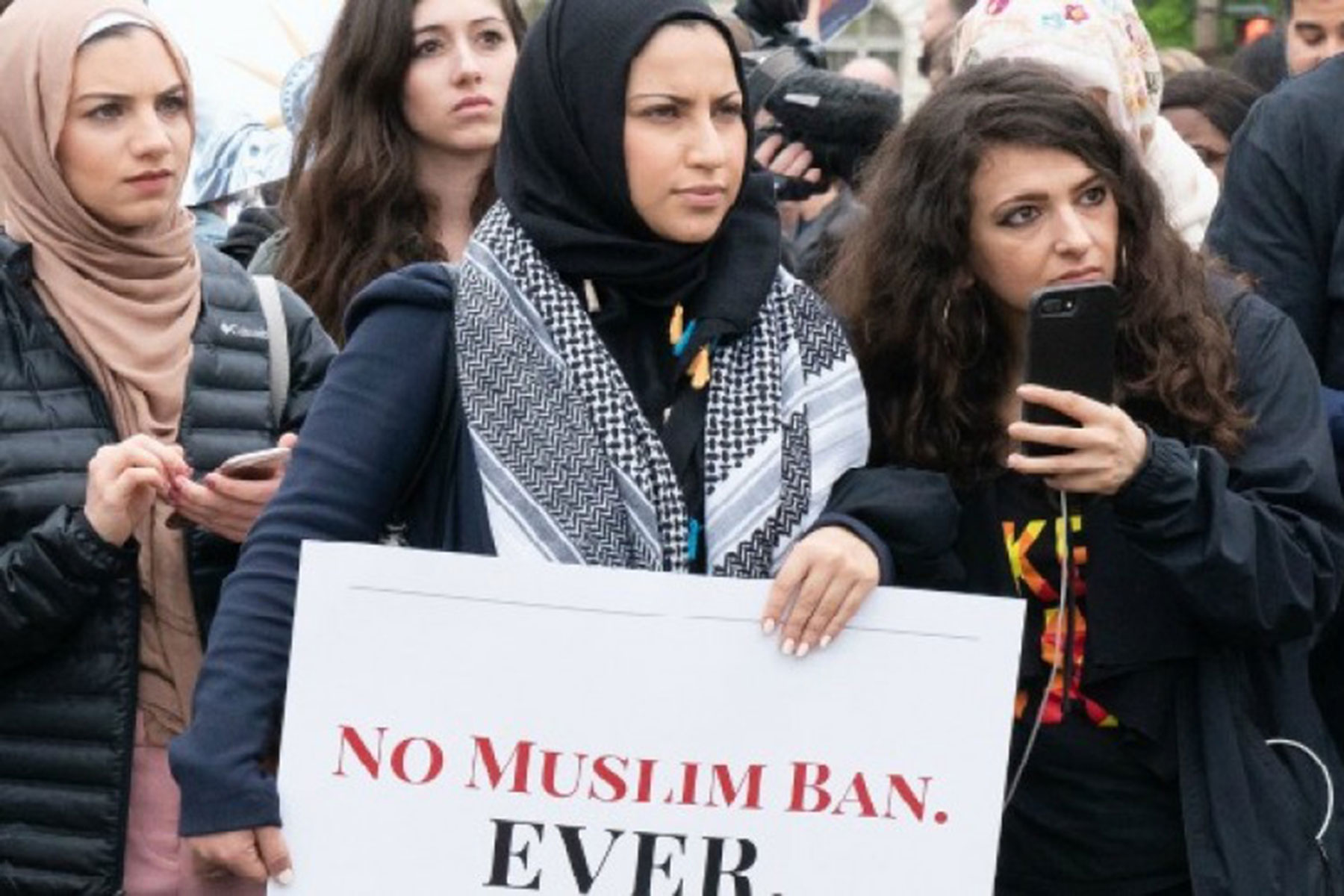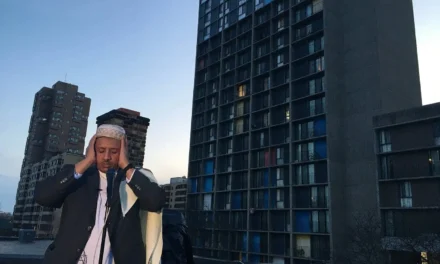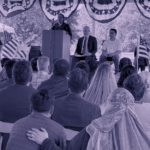
In the aftermath of the Supreme Court’s decision in Masterpiece Cakeshop v. Colorado Civil Rights Commission, several commentators wrote about the Court’s reasoning in that case and its possible implications for President Trump’s Muslim Ban—the legality of which is set to be decided in the upcoming days.
In Masterpiece, the Court focused on statements by members of the Colorado Civil Rights Commission, finding that they displayed “some elements of a clear and impermissible hostility” toward Jack Phillips’ religious beliefs. Even though the Court recognized that those statements could be subject to multiple interpretations, it nonetheless invalidated the Commission’s finding that Phillips discriminated against David Mullins and Charlie Craig in refusing to bake them a wedding cake. As Justice Kennedy explained in the Court’s majority opinion, the First Amendment’s religion clauses prohibit even “subtle departures from neutrality.”
Throughout the plethora of litigation that has been filed against the Muslim Ban over the past sixteen months—including Hawaii v. Trump, which is currently pending before the Supreme Court—the Department of Justice has worked hard to keep the legal focus away from Donald Trump’s statements, tweets, and other commentary about Muslims and Islam. But those words matter, and, in fact, the analysis in Masterpiece suggests that they could be pivotal to the final outcome of the case. That is why yesterday, Muslim Advocates released a new issue brief and fact sheet, both of which document how Donald Trump’s history of explicit, unambiguous, and unrepentant anti-Muslim bigotry is long and uninterrupted, beginning in his days as a celebrity businessman and continuing through his tenure in the Oval Office.
Trump has never been bashful about his anti-Muslim animus. In 2011, for example, he gave an interview to the Christian Broadcasting Network’s The Brody File where he recounted a conversation about Islam that he once had with former Fox News host Bill O’Reilly. According to Trump, O’Reilly asked him during their discussion if there was “a Muslim problem,” to which Trump responded, “absolutely, yes,” before stating his belief that the Koran “teaches some very negative vibe.” These sentiments went on to occupy a central role in Trump’s successful presidential campaign, during which he declared his conviction that “Islam hates us” and that Muslims harbor an “unbelievable hatred.”
These views also manifested themselves as policy stances throughout his presidential bid—for example, Trump’s support for a national Muslim registry, his calls for the surveillance and closure of American mosques, and, of course, his proposal for a “total and complete shutdown of Muslims entering the United States.” In light of all this, it requires little imagination to understand Trump’s intention when, during the signing ceremony for Muslim Ban 1.0 in January 2017, he read aloud the order’s title, “Protecting the Nation from Foreign Terrorist Entry into the United States,” and remarked: “we all know what that means.”
Some of the aforementioned statements have been the subject of frequent discussion throughout the Muslim Ban litigation, but, as highlighted in our issue brief, they only represent a small slice of Trump’s record of anti-Muslim comments and remarks. For instance, he has also frequently played a central role in creating and promoting inflammatory anti-Muslim conspiracy theories and propaganda. In 2015, for example, he repeatedly claimed—despite being disproven almost immediately—that he had watched Muslims in Jersey City, New Jersey celebrate as the World Trade Center collapsed on September 11, 2001. In August 2017, several months after assuming the Presidency, Trump made a series of statements on Twitter in response to a terror attack that had taken place in Spain that revealed a deeply disturbing hostility toward Muslims and Islam. As our issue brief describes:
In one of those statements, the President implored the public to “Study what General Pershing of the United States did to terrorists when caught. There was no more Radical Islamic Terror for 35 years!” With this tweet, President Trump revived a long-debunked myth claiming U.S. Army General John J. Pershing, who served for several years as the military governor of a province in the southern Philippines following the American invasion and occupation of the archipelago around the turn of the 19th century, once subdued a Muslim insurgency in the region by executing scores of prisoners using bullets dipped in pigs blood…The use of pigs and pork products in attempts to intimidate Muslims across the United States is well-documented, and the President’s celebration of such an expression of anti-Muslim hate is direct evidence of the religious animus he harbors against Muslims.
In October 2017, President Trump again sought to inflame anti-Muslim sentiment by claiming on Twitter that a “Just out report” found that the year-over-year crime rate in the United Kingdom had risen by 13% “amid [the] spread of Radical Islamic terror.” However, the bulletin released by the British Office for National Statistics, to which Trump appeared to be referring, contained no such finding—in fact, the bulletin did not even break terrorism out as a subcategory of the crimes it was tracking and reporting on. Just over a month later, President Trump used his Twitter account to repost three anti-Muslim propaganda videos that originated in the feed of Jayda Fransen, a leader within an extreme far-right British nationalist group known as Britain First. (In 2016, Fransen was found guilty of religiously aggravated assault after an incident in which she accosted and harassed a Muslim woman in a London park.)
Donald Trump’s long-standing attachment to and use of the term “radical Islamic terrorism” further underscores his blatant hostility towards Muslims. For years—even before he assumed public office—Trump was adamant that American political leaders use the terminology, often casting it as a necessary component of any strategy to defeat terrorism. Yet his own usage of the term reflects that Trump is less concerned with national security and more interested in using the term to reinforce a false synonymy between “Islam” and “terrorism.” Indeed, Trump has regularly coupled the term with calls for discriminatory policies and/or incendiary language targeted at Muslims. Since becoming President, he has increased his usage of the term, employing it in public himself on more than two dozen occasions since his inauguration.
Although there may be some distinctions between the Commissioner’s statements at issue in Masterpiece and Trump’s record of anti-Muslim bigotry, in Masterpiece the Supreme Court embraced a very expansive view of the kinds of language that should be understood as expressing hostility toward religion. When that standard is applied to Trump’s long record of unequivocal and unapologetic anti-Muslim statements, it is almost impossible not to conclude that just he has demonstrated “clear and impermissible hostility” that simply cannot be reconciled with the Constitution’s mandates of religious freedom and government neutrality.
Sirine Shebaya and Johnathan Smith
Victoria Pickering
Originally published by Common Dreams as President Trump, Your Words Do Matter (And Should Doom Your Muslim Ban)













